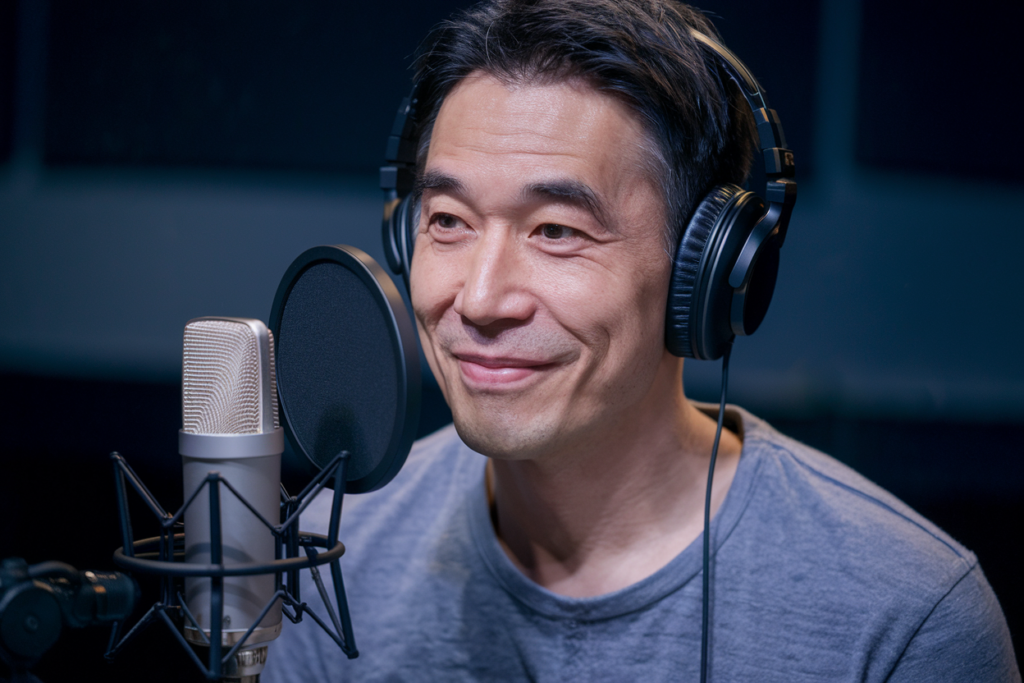Key Takeaways
- Meticulous Process: Japanese dubbing requires careful synchronization of audio with animation, ensuring dialogue aligns perfectly with character movements and emotions.
- Importance of Lip Sync: Effective lip sync enhances storytelling by aligning characters’ vocal delivery with visual cues, significantly impacting viewer engagement and experience.
- Challenges in Translation: Translating scripts involves timing adjustments and creative rephrasing to maintain cultural relevance while fitting lip movements without losing the essence of the original dialogue.
- Tools for Quality Dubbing: Utilizing advanced audio and video editing software, along with recording equipment, is essential for achieving high-quality voiceovers that resonate with audiences.
- Best Practices for Success: Key strategies such as prioritizing timing, emphasizing emotional delivery, fostering team collaboration, and conducting multiple takes help ensure seamless synchronization in Japanese dubbing.
- Technology Integration: Leveraging lip sync technology aids in matching phonemes to animated mouth shapes, streamlining the dubbing process for more natural performances.
Ever watched a Japanese anime and noticed how perfectly the characters’ lips match their dialogue? Handling lip sync in Japanese dubbing isn’t just an art; it’s a skill that can make or break the viewer’s experience. You might wonder how voice actors and directors achieve such seamless synchronization, especially when translating from one language to another.
Overview of Japanese Dubbing
Japanese dubbing involves a meticulous process that ensures the audio aligns perfectly with the visual elements on screen. This synchronization is crucial in anime, where characters’ emotions and actions often depend on precise vocal delivery and timing. Voice actors play a vital role here, capturing not just the dialogue but also the spirit of each character.
During dubbing, voice talent adjusts their performances to fit the lip movements displayed by animated characters. Translators work closely with directors to maintain the original intent while adapting scripts for fluidity and cultural relevance. You might wonder how they manage to capture nuances without losing meaning—it’s all about skilled adaptation.
Voice artists bring unique interpretations to their roles, providing distinct voices that resonate with viewers. The casting of voice over actors significantly influences how an audience connects with a character. Each performance requires understanding not just the lines but also emotional subtext.
Directors guide voice over talent through various takes, refining deliveries until everything feels natural and engaging. They ensure that each piece flows seamlessly within its context while retaining authenticity in expression. This collaborative effort results in high-quality dubbing that enhances viewer immersion in anime storytelling.
Japanese dubbing showcases exceptional artistry through careful synchronization of voiceovers with animation, creating memorable experiences for audiences worldwide.
Importance of Lip Sync
Lip sync plays a vital role in Japanese dubbing, significantly impacting the viewer’s experience. Effective synchronization enhances storytelling, ensuring that dialogue aligns seamlessly with character movements.
Audience Expectations
Viewers expect a high level of authenticity when watching dubbed anime. They want characters to express emotions through their voiceovers while matching lip movements. When voice actors deliver performances that resonate with the audience’s expectations, it fosters a deeper connection to the characters. This alignment not only preserves the story’s integrity but also elevates engagement levels, making each scene more impactful.
Challenges in Achieving Lip Sync
Achieving precise lip sync poses several challenges for voice artists and directors alike. Translating scripts from one language to another often requires adjustments in timing and phrasing. Voice talents must adapt their deliveries to match animated lip movements without losing the essence of dialogue or cultural nuances. Additionally, directors face the challenge of refining multiple takes to ensure natural performances that align perfectly with animation. These complexities highlight the artistry involved in creating immersive experiences for viewers while maintaining fidelity to original content.
Techniques for Handling Lip Sync
Lip sync techniques in Japanese dubbing require precision and creativity. Voice actors adapt their performances to ensure dialogue aligns seamlessly with the animated characters’ mouth movements.
Timing and Pacing Adjustments
Timing plays a crucial role in achieving effective lip sync. You need to adjust the pacing of voiceovers to match the rhythm of the animation. This often involves shortening or lengthening phrases without altering their meaning. Voice talent must deliver lines at a speed that fits both the character’s emotional state and visual cues on-screen. For instance, rapid speech can convey excitement, while slower delivery may express sadness or contemplation. It’s about finding that sweet spot where emotion meets timing.
Script Adaptation Strategies
Script adaptation is essential when localizing content for Japanese audiences. Translators work closely with voice artists to create dialogue that maintains cultural relevance while aligning with lip movements. You might encounter situations where direct translations don’t fit; creative rephrasing becomes necessary here. A skilled voice actor embraces this challenge, crafting lines that resonate authentically within the context of the animation. By focusing on key emotions and character traits, you ensure that every delivery remains true to its original intent while fitting smoothly into those animated frames.
These techniques highlight how meticulous attention to detail transforms voiceovers into an engaging experience for viewers, enhancing their connection with characters and stories alike.
Tools and Software for Dubbing
When it comes to achieving high-quality lip sync in Japanese dubbing, the right tools and software play a critical role. You can enhance the dubbing process significantly by utilizing advanced technology designed specifically for voiceovers.
Audio Editing Software
Audio editing software provides essential features for precise sound manipulation. Programs like Adobe Audition or Audacity allow you to edit voice recordings, remove background noise, and adjust audio levels. These tools help ensure that every word aligns perfectly with the animation.
Video Editing Software
Video editing software is crucial for reviewing footage and synchronizing voiceovers with animated characters’ mouth movements. Applications like Final Cut Pro or Adobe Premiere Pro enable seamless integration of audio tracks with video clips, making fine-tuning adjustments easier during the dubbing process.
Voice Recording Tools
High-quality recording tools are vital for capturing clear voiceovers from talented voice artists. USB microphones or professional-grade studio equipment provide crystal-clear sound quality, ensuring that performances translate well into the final product.
Lip Sync Technology
Lip sync technology streamlines the synchronization of dialogue with animations. Software such as Papagayo helps animators match phonemes to corresponding character mouth shapes, allowing voice actors to deliver lines that fit naturally within their roles.
Collaboration Platforms
Collaboration platforms facilitate communication between directors, translators, and voice talent throughout the dubbing process. Tools like Slack or Trello keep everyone on the same page regarding updates and feedback, ensuring cohesive teamwork towards achieving perfect lip sync.
By leveraging these tools effectively, you can enhance your Japanese dubbing projects while ensuring that your audience enjoys an immersive experience where dialogue aligns seamlessly with character actions.
Best Practices in Japanese Dubbing
When diving into Japanese dubbing, several best practices ensure that voiceovers align seamlessly with animation. These strategies enhance viewer engagement and maintain character authenticity.
- Prioritize Timing
Timing plays a crucial role in lip sync. Voice actors adjust their deliveries to fit the rhythm of the animation. Pacing must match the visual cues, ensuring that dialogue flows naturally with character movements.
- Utilize Script Adaptation Techniques
Adapting scripts is vital for effective dubbing. Translators collaborate closely with voice talents to create culturally relevant dialogue that fits lip movements without sacrificing meaning. This often involves creative rephrasing or restructuring sentences.
- Emphasize Emotional Delivery
Voice artists capture the essence of each character through emotional delivery. Authentic expressions resonate more with audiences, enhancing their connection to the story and characters.
- Invest in Quality Recording Equipment
High-quality recording tools are essential for capturing clear voiceovers. Invest in professional microphones and soundproof environments to minimize background noise and maximize audio clarity.
- Leverage Lip Sync Technology
Utilize software like Papagayo for precise phoneme matching to animated mouth shapes. Such tools streamline the synchronization process, allowing voice actors to focus on delivering compelling performances.
- Foster Collaboration Among Team Members
Open communication between directors, translators, and voice talents enhances collaboration throughout the dubbing process. Platforms like Slack or Trello facilitate smooth exchanges of ideas and feedback, leading to better outcomes.
- Conduct Multiple Takes
Directors refine performances by conducting multiple takes during recordings. This approach allows them to choose the most natural-sounding delivery while fine-tuning timing for perfect alignment with visuals.
- Incorporate Feedback Loops
Regularly review recorded sessions and seek input from team members about performance quality and synchronization accuracy—this feedback loop helps identify areas needing improvement before finalizing any project.
By following these best practices in Japanese dubbing, you can achieve high-quality results that resonate with viewers while maintaining an authentic experience that reflects original content nuances.
Conclusion
Mastering lip sync in Japanese dubbing isn’t just about technical precision; it’s an art form that requires collaboration and creativity. By understanding the intricate balance between dialogue and character movements, you can appreciate the dedication behind every performance.
Utilizing advanced tools and fostering effective communication among team members play crucial roles in this process. Following best practices ensures that voiceovers resonate with audiences while maintaining authenticity to the original content.
As you explore more anime, remember how essential lip synchronization is to your viewing experience. It transforms storytelling into something vibrant and engaging, allowing characters to come alive through their voices.
Frequently Asked Questions
What is lip synchronization in Japanese anime dubbing?
Lip synchronization in Japanese anime dubbing refers to the precise alignment of character dialogue with their lip movements. It enhances viewer experience by ensuring that voiceovers match the animated characters’ mouth actions, making the storytelling more immersive.
Why is lip sync important in dubbing?
Lip sync is crucial because it affects how audiences perceive character emotions and authenticity. Effective synchronization allows viewers to connect better with characters, enhancing engagement and overall enjoyment of the anime.
How do voice actors achieve accurate lip sync?
Voice actors achieve accurate lip sync by adjusting their performances to align with the timing and rhythm of animated characters’ mouth movements. This often involves rephrasing and modifying delivery while maintaining the original dialogue’s meaning.
What challenges do translators face during dubbing?
Translators face challenges such as maintaining cultural relevance while adapting scripts for timing and phrasing adjustments. They must ensure that translated lines fit within the constraints of animation without losing essential meanings or emotional impact.
What tools are used for achieving high-quality lip sync?
High-quality audio and video editing software like Adobe Audition and Final Cut Pro are commonly used for sound manipulation. Additionally, tools like Papagayo help match phonemes to character mouth shapes, facilitating effective synchronization during dubbing.
What best practices should be followed for effective dubbing?
Best practices include prioritizing timing to match visuals, utilizing culturally relevant script adaptations, investing in quality recording equipment, fostering team collaboration, conducting multiple takes for refinement, and incorporating feedback loops for continuous improvement.







